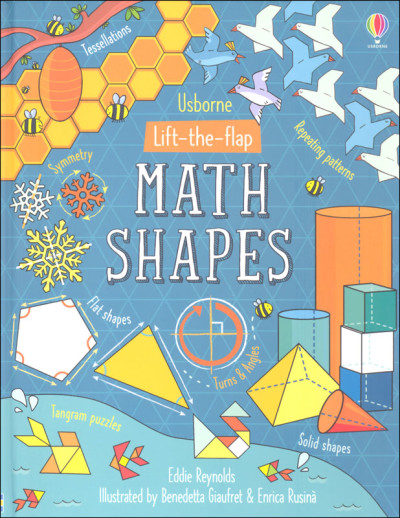We use cookies to make your experience better. To comply with the new e-Privacy directive, we need to ask for your consent to set the cookies. Learn more.
Math Shapes (Usborne Lift-the-Flap Books)
Enter new dimensions! Lift the flaps to learn about solid, flat, and symmetrical shapes, and angles. Then move on to patterns, tessellations. When you're ready, take the shape and tangram challenges. Vibrant drawings of construction workers, jungle animals, and silly aliens add to the learning fun. Go to Usborne's Quicklinks online to get more activities. Includes brief glossary of terms.15 pgs, hc. ~ Ruth
Learning and practicing primary math facts is the focus of this engaging and interactive Usborne series of full-color flap books. This series covers such vital concepts as addition and subtraction, measurement and comparison, fractions and decimals, and basic time-telling skills. Young children develop basic math skills as they lift dozens of flaps to reveal the answers/solutions to numerous math puzzles or problems. Several volumes include hands-on activities or games designed to sharpen math skills, inspiring even the most reluctant student of mathematics. Measures 8 ½" x 11". 16 pgs, hc. ~ Mike

